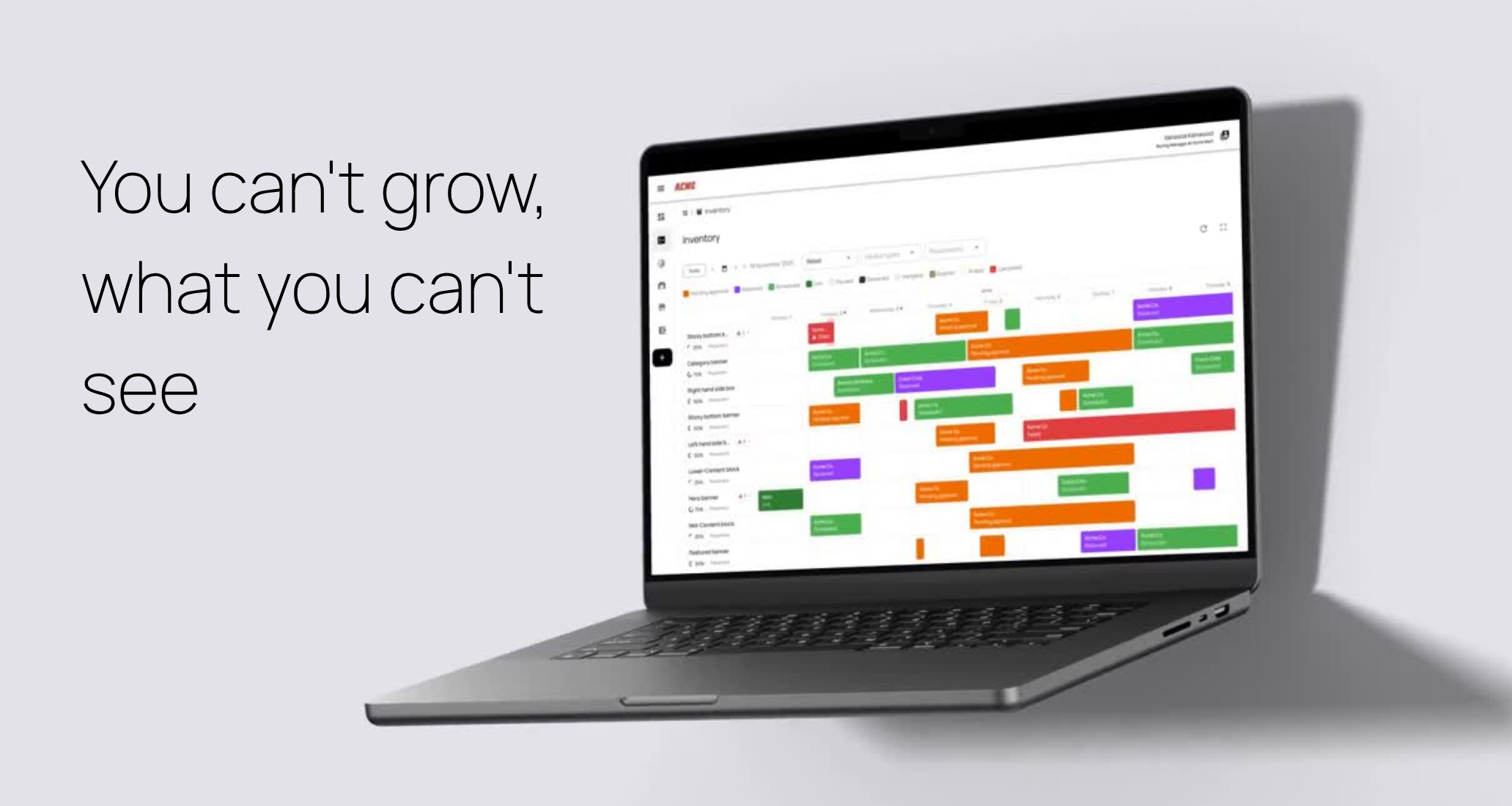The unified front door: how retailers unlock margin through visibility
Most retailers still run media sales out of email threads and spreadsheets. It works until it doesn’t. Teams miss inventory. Pricing varies by deck. Campaigns run without a clean read on performance. The result is lower yield, slower sales cycles, and frustrated partners.
A unified front door changes that. It gives retailers one place to see, package, sell, deliver, and report across all inventory, onsite, offsite, and in-store.
The visibility problem
Siloed ownership is the norm:
- Merchandising controls seasonal displays and JBPs
- RMN runs onsite, offsite, and sometimes screens
- Marketing owns brand channels and approvals
Each team is busy. Each team is right. None of them has the full picture. That gap is expensive. Unused slots go unsold. High-performing assets lack premium pricing. Approvals stall because no one can see status or specs.
What a unified front door looks like
At a minimum, it should provide:
- Inventory catalog: All sellable assets, with specs, availability, and price guidance
- Packaging and rate cards: Standard bundles by goal, audience, and season
Workflow: Requests, approvals, asset checks, and trafficking in one place - Delivery and reporting: Setup, pacing, and performance down to SKU where possible
- Governance: Roles, permissions, and margin controls
When this exists, a lot of good things follow.
Yield improves
Visibility surfaces underused assets. You can price by performance, create bundles that reflect real shopper journeys, and steer partners toward placements that convert. Sales decks stop being one-offs. They become dynamic views into what is actually available.
Planning gets easier
With a shared catalog, JBPs become more concrete. Suppliers can see what they are buying and when. RMN teams can upsell based on availability and proven impact. Finance gets a predictable view of revenue rather than a patchwork of commitments.
The in-store advantage
Digitizing in-store doesn’t happen overnight. While that evolves, you still have high-value physical assets. Catalog the “analog” too. End caps, coupon racks, sampling, and yes, shelf wobblers. When those sit next to screens and onsite formats, you can package the full journey rather than a single touch.
Where to start
- Inventory first: Document everything sellable, including specs and owners
- Common taxonomy: Name formats the same way across teams
- Baseline pricing: Tie prices to outcomes and scarcity
- Standard bundles: Build a small set of packages aligned to retailer goals
- Governance: Decide who can see and sell what
- Reporting: Close the loop across channels, even if attribution varies by format
The result
A unified front door reduces friction, improves yield, and creates a better partner experience. It also sets the foundation for more advanced capabilities, like self-serve for trusted partners and, eventually, agentic buying.
Help us uncover the real story behind retail media operations
If you’re a retailer navigating the complexities of media planning, merchandising, and campaign delivery , we’d love your input.
We’re currently collecting insights for The Rogue Inventory Report, a new research piece exploring how visibility (or the lack of it) is impacting retail media performance, margin, and cross-functional alignment.
Take the 3-minute survey here → https://forms.gle/huPiPhhRnx7dbrQv7
It’s anonymous, fast, and your input will help shape the conversation around where retail media goes next.
About the Author
Dominik Elias is a Product Marketing Manager and one of the founding members at Zitcha. With 15+ years in B2B marketing, she loves solving problems and connecting teams which is why Zitcha’s mission to make retail media better for everyone just fits.
.jpeg?width=224&height=224&name=T034M962V51-U034YLW705A-4f289e34c2ea-512%20(1).jpeg)
